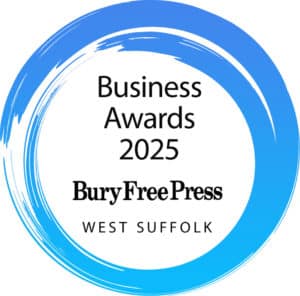Land promotion companies have until 5th April 2022 to give government their views on BNG
Introduction
The government’s consultation on the Biodiversity Net Gain (BNG) provisions published in January gives some indication about the potential implications for development companies such as Jaynic, and while there are still some areas of uncertainty the direction of travel is clear.
The BNG requirements were introduced in the Environment Act, which was passed last November, and is set to become mandatory in 2023.
It will require developers to demonstrate how they will bring about a minimum ten per cent increase in biodiversity on development sites in order to obtain planning permission for their projects. Under the act, the necessary habitat enhancement will be paid for by the developer and must be guaranteed to endure for 30 years.
The consultation is asking developers, planning authorities, environmental professionals and landowners for their views on the details of how BNG should be delivered when building new housing or commercial development and closes on 5th April 2022.
This is important to us at Jaynic as we have a substantial portfolio of sites mainly in Suffolk, Cambridgeshire and Essex where we are involved in the promotion of land for development, as well as sites already under construction. This includes major sites that we are promoting for residential, warehousing and business development.
Running through the guidance there are some areas that are of significant relevance to us.
Timing of Biodiversity Net Gain Schemes
BNG schemes cannot be pushed back until later in a development project but must be delivered withing 12 months. So with our G14 scheme at Stowmarket we will be implementing our BNG proposals sooner rather than later, in order to ensure full compliance with the permission and to avoid any issues arising during later stages.
Clearly this will have an impact on cashflow, but we know now that it is already a policy requirement for most councils, so we will have to take those costs into account at the start.
The G14 Site has been extensively farmed for many years and comprises large agricultural fields with generally low bio-diversity value,so it shouldn’t be too difficult to achieve an overall gain of 10%.
Some Councils are looking to more than 10% bio-diversity net gain
The provisions allow for councils to seek a higher percentage BNG, if it can be justified. This could have a significant impact on the viability of a scheme.
It could also have a bearing on where developers look for sites as a higher than 10% BNG will increase costs and involve setting aside more land. A requirement for a BNG of 20% could possibly take up as much as a third of the overall site, which would significantly reduce the amount of developable land. Inevitably, this is likely to reduce land values.
However, where councils opt for a BNG higher than 10% they must justify it and demonstrate that development would still be economically feasible. If it will make schemes unviable then figures higher than 10% are unlikely to be found sound at the Local Plan Examinations stage. In locations such as Cambridge where land values are generally higher, particularly for housing, councils probably won’t have too much difficulty in demonstrating that 20% BNG doesn’t render a scheme unviable.
Dealing with Phasing
It is not unusual for a large development scheme to be undertaken in phases over several years, but the BNG provisions indicate that a developer can’t leave the work until the last phase of the development, it must be incorporated at each phase.
Buying Diversity Units or Habitat Banking
This potential solution to achieving 10% BNG is similar to the carbon off-set provisions that have been in place for some years. If it is not possible to mitigate habitat loss on-site, then BNG can be achieved on additional land owned by the developer, by doing a deal with an adjacent landowner, or by buying in bio-diversity credits for sale on the open market.
It is not yet clear whether there is a limit on how far away this other land can be. A site 100 miles away from the proposed development is clearly not going to benefit the local area, but at the regional or even national level, the BNGs would still be achieved. At the G14 Site we have had to mitigate for the loss of skylark habitat on the site and have achieved this by providing ‘skylark plots’ on another site 5-6 miles away with the cooperation of another landowner.
The process for buying bio-diversity units is still not completely clear and further information is likely to come forward on this aspect of the BNG provisions.
The valuation of land to be used for biodiversity offset is also an interesting aspect of the provisions. A value higher than agricultural use is almost certain, otherwise farmers and landowners will have no incentive to create such areas.
Local Authority Monitoring
The Government is also likely to require that local authorities monitor the provision of land for BNG, which could be achieved through planning conditions and S.106 agreements. However, many local authorities simply don’t have the in-house ecological expertise to properly monitor this aspect of the BNG provisions. An inevitable outcome will be that the costs of monitoring will be borne by the landowner or developer.
One thing is certain, we will continue to monitor the detailed provisions on this ‘hot topic’ as they are finalised following this latest consultation.



